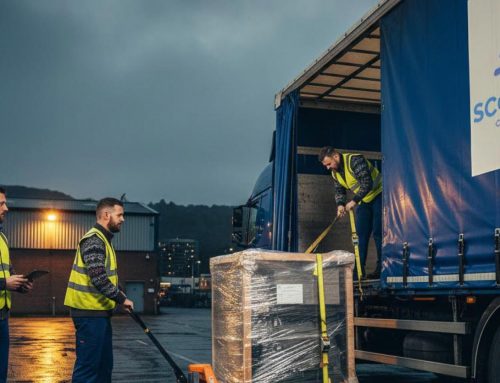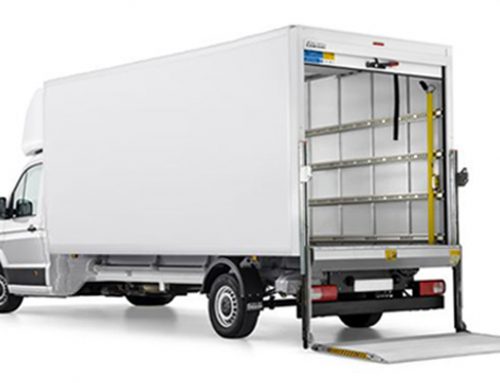For most courier and haulage moves, a quick booking and a clean route are all that is required from start to finish, but when the cargo exceeds the standard envelope—whether in length, width, height, or sheer mass—it enters the specialised realm of Abnormal Inpisible Loads (AILs).
Moving an AIL is not a simple driving job; it’s a complex, multi-agency planning operation governed by rigorous regulatory frameworks that professional drivers will follow to the letter. The drivers you see behind these monsters have trained and studied for tens of thousands of hours. Success hinges on precise adherence to legislation, such as the UK’s Special Types General Order (STGO), and meticulous coordination with multiple road, bridge, and police authorities.
This blog, written by Scotland’s Courier Company, breaks down the core definitions, regulations, and multi-stage notification process required to move specialist cargo safely and legally across Great Britain and beyond. We hope you enjoy the read and, more importantly, that it helps you in what is a very specialised business requirement.
Defining the ‘Abnormal’ Load
The first step in any specialist haulage job is determining if the cargo qualifies as an Abnormal Inpisible Load (AIL). In the UK, a load is classified as abnormal when it exceeds one or more of the following thresholds set by the Road Vehicles (Construction and Use) Regulations 1986 (C&U) and The Road Vehicles (Authorisation of Special Types) (General) Order 2003 (STGO).
Key UK Thresholds
Dimension
Threshold
Requirement Triggered
Gross Weight: Over 44,000 kg (44 tonnes) STGO Category (Cat 1, 2, or 3)
Width: Over 2.9 metres Police and Highway Authority notification
Rigid Length: Over 18.65 metres Police notification
Axle Load: Over 10,000 kg (non-driving) or 11,500 kg (driving) STGO classification
When a load exceeds any of these standard limits, it requires compliance with the STGO framework.
The Cornerstone of Compliance – STGO
The Special Types General Order (STGO) 2003 is a legislation that allows vehicles that exceed standard C&U limits to operate legally on our roads. It classifies vehicles into three categories primarily based on Gross Vehicle Weight (GVW). Every vehicle operating under STGO must clearly display a category plate on the front of the towing vehicle.
The Three STGO Categories
Category
Maximum Gross Vehicle Weight (GVW)
Minimum Axles
Key Requirements & Speed Limits
STGO Cat 1 Up to 50,000 kg (50 tonnes) 5 or 6 Max 60mph (motorway), 50mph (dual carriageway). 2 clear working days’ notice.
STGO Cat 2 Up to 80,000 kg (80 tonnes) 6+ Max 40mph (motorway), 35mph (dual carriageway). 2 clear working days’ notice to police, 2 working days’ notice to highway/bridge authorities.
STGO Cat 3 Up to 150,000 kg (150 tonnes) 6+ Max 40mph (motorway), 35mph (dual carriageway). 5 clear working days’ notice to authorities.
When STGO Limits Are Exceeded: The Special Order
For the most extreme movements—those exceeding 150,000 kg, over 6.1 metres wide, or 30 metres long—the complexity increases further. These movements require a Special Order (historically known as the BE16 form) from National Highways, sometimes requiring up to 10 weeks’ notice to allow road and bridge authorities to inspect the structural integrity of the planned route.
The Multi-Stage Notification Process
Specialist haulage lies in effective notification. It’s the haulage company’s legal responsibility to notify all relevant parties about the proposed journey. This is typically managed through the ESDAL system.
The notification process involves three distinct authorities:
1. Police Notification
- Who to Notify: The police forces that cover the areas the vehicle will move through.
- Notice Period: A minimum of 2 clear working days is generally required for most STGO loads.
- What it Covers: Police notification is primarily concerned with dimensions (length, width, overhangs) and ensuring that the route is safe for other road users. They assess whether a private escort or police escort is required and may impose time restrictions (embargoes), such as prohibiting travel during peak hours (e.g., 6:30 am–9:30 am and 3:30 pm–6:30 pm in some areas).
2. Highway and Bridge Authorities (National Highways & Local Authorities)
- Who to Notify: National Highways (for motorways and strategic trunk roads) and relevant local highway and bridge authorities.
- Notice Period: This varies significantly based on weight:
- Up to 80,000 kg (Cat 1 & 2): 2 clear working days’ notice.
- Up to 150,000 kg (Cat 3): 5 clear working days’ notice.
- Over 150,000 kg (Special Order): Requires a lengthy approval process, often requiring 10 weeks of pre-consultation.
- What it Covers: This notification is critical for weight-related movements. It allows bridge owners and structure operators to perform checks and ensure that the load will not damage the infrastructure (e.g., bridges, culverts, buried pipework).
3. European and International Requirements
Hauling abnormal loads across borders introduces an entirely new layer of complexity.
While the UK uses STGO, the rules change immediately upon entering the EU. There is no single “EU abnormal load permit.” Instead, each EU member state has its own specific set of laws, limits, and permitting processes.
For a single movement from, say, the UK to Germany via the Netherlands, permits must be applied for separately for the UK, the Netherlands, and Germany. This often requires the haulier to:
- Appoint Local Agents: Work with local agents in each country to handle jurisdiction-specific paperwork.
- Obtain Specific Permits: Acquire permits, sometimes known as vignettes or authorisations, for transit through specific countries.
- Manage Differing Dimensions: A load that is “standard” in the UK may be “abnormal” the moment it crosses the border, requiring immediate notification in the new territory.
Beyond the Paperwork—Route Planning and Safety
Executing the move safely is the real test of a specialist haulier. The notification process is inextricably linked to meticulous route planning.
Escorting Requirements
Escorts are mandated for safety based on the size and nature of the load:
- Width: An attendant/escort vehicle is legally required for loads wider than 3.5 metres.
- Motorways: Loads up to 4.6m wide can often move on motorways without a police escort (using private or self-escorts).
- Urban/Standard Roads: Loads wider than 4.1 metres on standard roads generally require an escort.
- Police Escort: Reserved for the largest, most disruptive, or dangerous movements, typically loads over 5.0 metres wide or 30 metres long.
The Role of ESDAL and Advanced Planning
National Highways’ ESDAL system is a vital tool for specialist hauliers, allowing the electronic submission of movement details and proposed routes to all relevant authorities simultaneously.
- Assess Route Suitability: Automatically check the route against known low bridges, roadworks, and weight restrictions.
- Ensure Time Compliance: Guarantee that the complex notification deadlines (the 2 and 5 clear working days) are met before the proposed movement date.
- Coordinate Attendants: Plan the placement and responsibilities of self-escort pilot cars required for wide or long movements.
Conclusion: Expertise is the Best Permit
Specialist artic haulage is a high-stakes field. Transporting abnormal loads is only possible because of the rigorous, multi-layered regulatory framework.
For the client, attempting to manage this internally is nearly impossible. The consequences of non-compliance—ranging from hefty fines and delays to potential infrastructure damage—are too great.
When selecting a logistics company, ensure they have proven expertise in navigating the STGO framework and utilising the ESDAL system.
We hope this blog has helped. Don’t hesitate to get in touch with us if you require assistance with the movement of your shipments within the UK or overseas.
Contact Scotland’s Courier Company for your haulage needs. Email us at info@scotlandscouriercompany.





